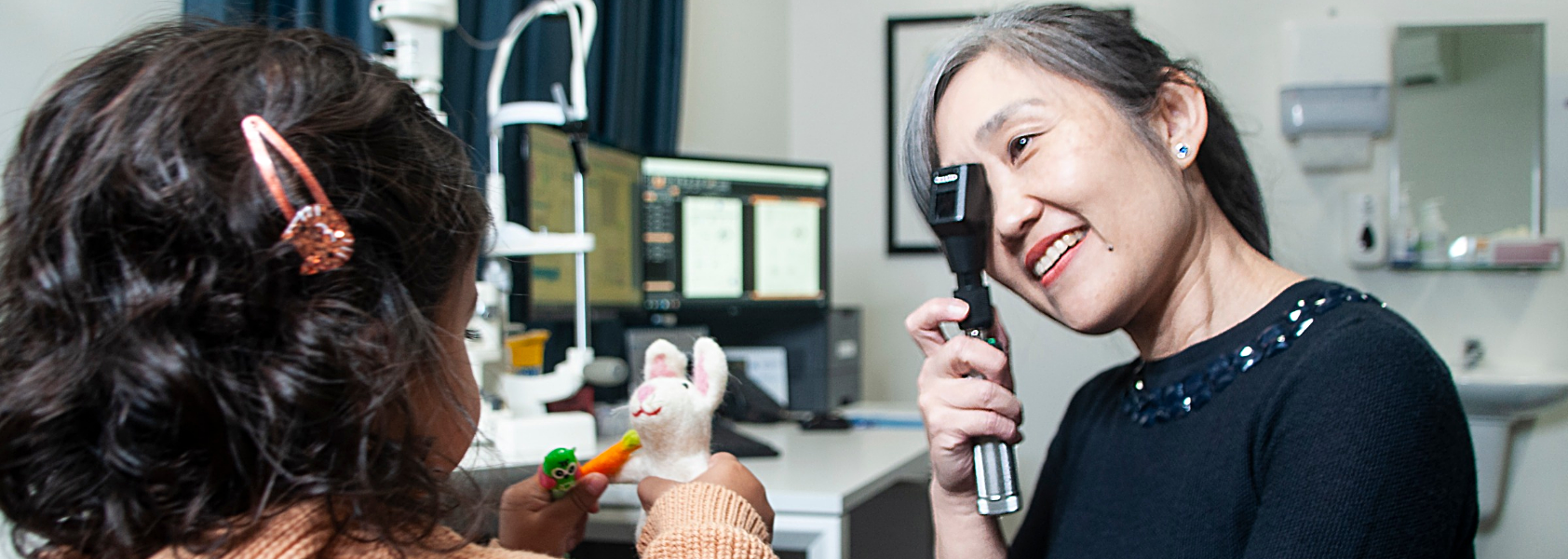Understanding strabismus / squints
Strabismus, sometimes called a squint, is a lack of alignment between the eyes. People with the condition may have one eye that looks up, down or sideways while the other is looking straight ahead – or both eyes may be affected. It affects around 3% of people, and can cause problems with vision.

Causes and risk factors
Strabismus happens when the brain can’t control the muscles around the eye. It usually shows up in infancy or childhood but can develop later.
It can also be a result of a serious medical issue like a stroke, brain tumour, head injury or neurological condition.
Symptoms and diagnosis
If you notice that one or both of your child’s eyes seem to wander or look in a different direction, talk to your ophthalmologist or GP. Diagnosis involves visual testing and physical examination of the eye.
Visual processing issues
Because the eyes are not working in sync, the brain may struggle to combine images from both eyes into a single image. This can cause double vision and problems with depth perception.
Strabismus can also lead to amblyopia, where vision in one eye weakens over time.

Treatment options
Treatment tends to be far more effective before the age of six. After that, it’s harder for the brain to rewire and function normally. Children don’t grow out of strabismus on their own – although wandering or crossed eyes in very young babies usually resolve.
Glasses
A prescription for glasses is a common treatment for mild strabismus. Correcting vision in both eyes can help the brain recognise signals and realign the eyes.
Patching
This method involves wearing a patch over the stronger eye, forcing the brain to rely on the eye with weaker vision. This can help strengthen connections between the eye and brain, improving alignment in some cases. Your child may need to wear the patch for several months.
Botulinum toxin treatment (Botox®)
Botulinum toxin treatment (Botox®) was created in the 1970s to treat squint not wrinkles. Injections into eye muscles causes temporary weakness of the muscle helping to align the eyes. Treatment is quick and performed in the clinic using drops to numb the eye. It lasts 2-3 months and can be repeated. It is used when there are no surgical options or patients do not want surgery, to help plan for surgery and assess risk of double vision, or in some select cases to restore long-term control of eyes that have decompensated with a single injection.
Surgical treatment
Surgery works by loosening or repositioning specific muscles to help straighten a persistent misalignment. Strabismus surgery is the most common eye surgery for children and is performed on adults as well. It’s successful in about 70% of cases.
Children will need a general anaesthetic for the procedure, while adults may only need a local. During surgery, the surgeon makes an incision into the sclera – or white of the eye – to expose the eye muscles. They may reposition some muscles, placing them further back on the eyeball, and tighten others.
Recovery
Most strabismus surgery patients can go home on the day of the procedure. If you are an adult, you will need someone to drive you home, as your eye will be covered and you will be recovering from an anaesthetic.
In the days following the procedure, your eye may be sore, scratchy, swollen and red. Headaches are common in children and adults. Your ophthalmologist will prescribe pain relief, eye drops and steroids to help the eye recover more quickly.
Most people will not be able to return to work or school for 10 days after surgery.
During this time, avoid:
- Rubbing or scratching the eye
- Exposing the eye to dirt, dust or water
- Doing strenuous exercise or heavy lifting
If your child has had surgery, you will need to make sure they follow the recovery rules. For young children, this can be difficult – talk to your nurse or ophthalmologist for help.
Complications
Your ophthalmologist will be able to talk you through the risks and benefits, and help you understand your options.










